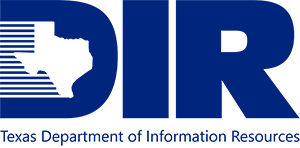Small companies just getting started can quickly get up-to-speed with a few loosely connected solutions and basic data management systems.
However, as an organization develops and grows, its needs come to reflect its changed status. Growing businesses with swelling profits and client bases often need more advanced IT infrastructures that are able to elegantly handle changing business processes, the various needs of different customers, and their influx of data without blocking potential expansion avenues.
Deciding whether your business actually needs to bolster its backend system comes down to a number of considerations. The signs below should help you to assess your company’s situation more effectively:
Sign #1: Downtime from Failed Integrations
As solutions are tacked onto your existing technology system, they contribute to a growing degree of complexity and a greater risk of malfunctioning. When certain integrations fail, they can affect other aspects of your business – even causing you system-wide downtime that costs you money through forced inactivity.
Anything from version updates of specific solutions to incompatibility between endpoints can contribute to this issue, further reinforcing the need for more granular control of data and internal resources within your organization.
Sign #2: An Overabundance of Bugs
Should you find that your business’s backend has begun acting up in ways it hadn’t before – yet you lack control over the aspects of the solutions that are to blame – it may be time to consider rolling out a more scalable, centralized platform.
Errors in the handling of data and buggy connections between software solutions signals the need for more consistent structural development to create a stronger foundation for existing and future feature additions.
Sign #3: Network Issues
Two tell-tale signs that a company needs to expand its IT resources are a slow network and the repeated loss of data. These issues often point to a need to upgrade physical hardware; however, if your physical setup could use some improvements, chances are your software systems require the same.
Sign #4: Disproportionate Maintenance/Strategy Time Allocation
Expanding on the point above regarding downtime, it can be helpful to consider whether more of your team’s time has gone towards maintaining misfiring elements of your existing system or strategically implementing new features.
If your company’s IT talent have been devoting most of their time to the former, this may signal the need for a more scalable foundation, rather than a system built on integrations.
Sign #5: Overtime and Longer Hours
Although understanding the diagnostic potential of this factor involves monitoring team habits, rather than checking your existing systems directly, it factors in a particularly telling facet of your business: the amount of time your IT team must devote to necessary work on infrastructure.
If most of the members on your IT team are putting in overtime and working more hours to accommodate a growing maintenance work load, then it may be a good idea to consider implementing a more controllable central solution.
Sign #6: Turnover Causing Major Problems
This sign crops up when you lose members of your IT team and are faced with a lull in development as new talent is acquired to compensate.
Unfortunately, even when new talent is brought in to fill empty positions, onboarding processes can become needlessly complicated if confusing structures of interconnected integrations require extra training time that further delays additional development.
Sign #7: Poor System Support for New Functionality
Identifying a need for fresh functionality in your technological system – yet finding your own team incapable of implementing it smoothly, given the constraints your current infrastructure imposes on them – clearly proves that you’ve outgrown the resources you have at present.
Especially where technological development is concerned, innovation and agile development are key to consistent growth. If your system makes this difficult or impossible, it may be time for a change.
Sign #8: Exponential Growth
If your company is seeing serious growth in profits and/or clients, an infrastructure upgrade is likely necessary to stay on top of it all. Waiting for system-wide stress to bring your business to a standstill is not an attractive option when growth begins to ramp up significantly.
How to Successfully Expand Your IT Infrastructure
Taking on the challenge of scaling your existing technological resources to accommodate evolving demands boils down to determining precisely what it is you need and ensuring it’s built in a way that keeps your business’s future in mind.
At Simpat, we work with emerging companies to assess their needs and iteratively implement fitting functionality. By carefully conserving the technology you already have in place, we’re able to help scale your technological capabilities – all without your business having to endure extended periods of downtime or the loss of mission-critical functionality in the process.
Reach out today for more information on how Simpat can partner with you to develop a scalable, sustainable IT infrastructure.
